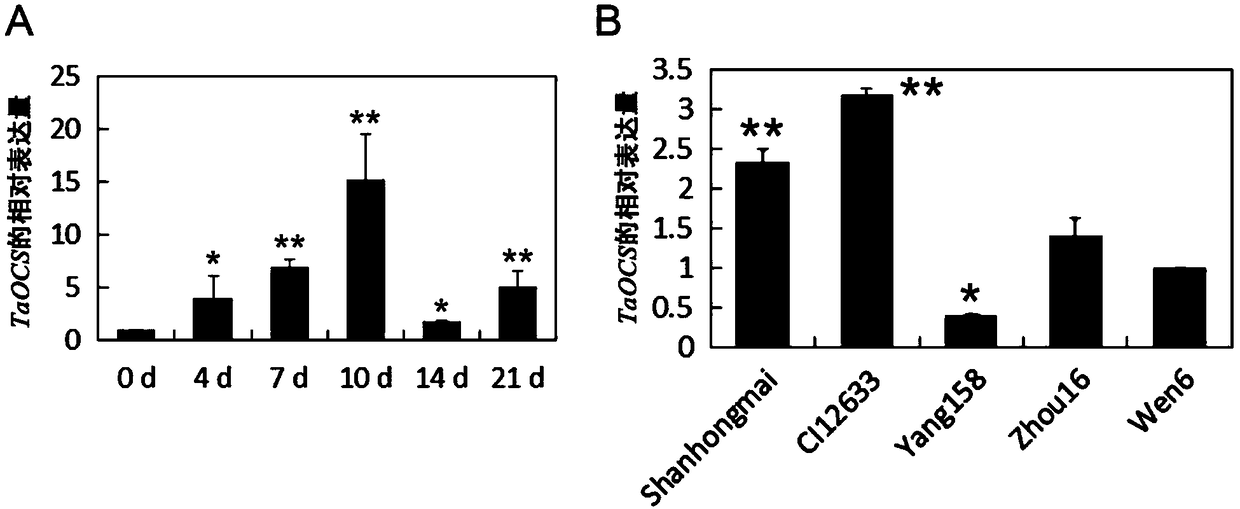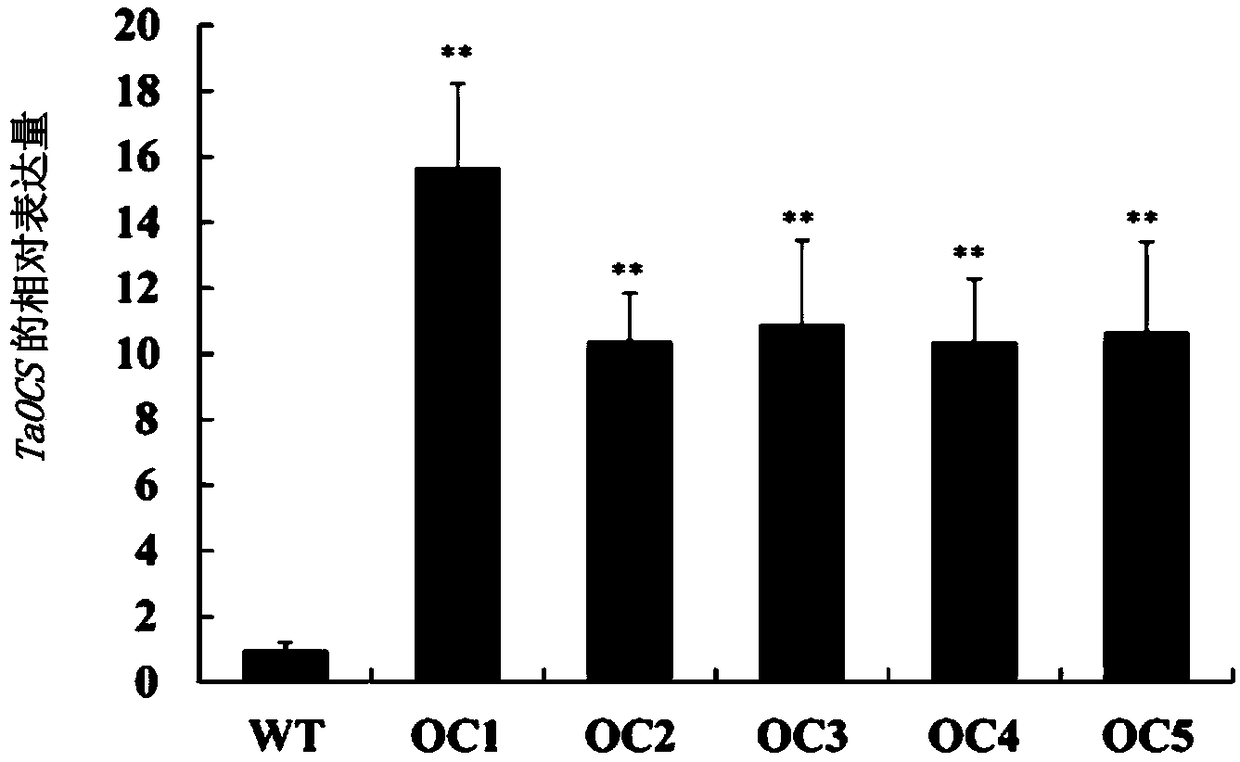Breeding method for genetically modified wheat capable of resisting both sheath blight and root rot and related biological material thereof
A technology of biological materials and transgenic plants, which is applied in the cultivation of transgenic wheat with resistance to sheath blight and root rot and the fields of related biological materials, can solve the problems of slow progress and lack of
- Summary
- Abstract
- Description
- Claims
- Application Information
AI Technical Summary
Problems solved by technology
Method used
Image
Examples
Embodiment 1
[0087] Embodiment 1, the cloning of the wheat protein TaOCS and its encoding gene of concurrent resistance to sheath blight and root rot
[0088] 1. Cloning of TaOCS gene
[0089] The inventors of the present invention isolated and cloned a wheat disease resistance-related protein from sheath blight-resistant wheat germplasm CI 12633, whose amino acid sequence is shown in sequence 2 of the sequence listing, and named it TaOCS protein. The gene encoding the TaOCS protein is named TaOCS gene, as shown in sequence 1 of the sequence listing, and the specific cloning method is as follows:
[0090] Extract the total RNA from the stems of wheat CI12633 inoculated with Rhizoctonia solani, and reverse-transcribe the extracted RNA samples to synthesize the first-strand cDNA according to the procedure of the first-strand cDNA synthesis kit of Tiangen Biochemical Company, as a template for gene cloning, and use TaOCS -OF1: 5'-GCGCGGATGAAACCCTAGC-3' and TaOCS-OR1: 5'-GTATGGGTTACTGTTAGTCTT...
Embodiment 2
[0100] Example 2. Acquisition and identification of disease resistance of transgenic TaOCS wheat resistant to both sheath blight and root rot
[0101] 1. Construction of recombinant expression vector
[0102] Construct the complete ORF sequence of TaOCS gene into pWMB123, the specific operation is as follows:
[0103] 1. Using a primer pair composed of TaOCS-O-F and TaOCS-O-R, perform PCR amplification under the action of the high-fidelity amplification enzyme PRIMERSTAR (TAKARA Company), to obtain and recover the PCR amplification product.
[0104] TaOCS-O-F:5'-GAC GGATCC ATGGCCGCCGCCGCGACGAC-3' (the sequence indicated by the underline is the restriction site sequence);
[0105] TaOCS-O-R:5'-TCA GAGCTC TTAGGATCTATTCTTTGGAGGTTTGAC-3' (the sequence indicated by the underline is the restriction site sequence).
[0106] PCR reaction program: pre-denaturation at 98°C for 1min; 35 cycles of 98°C for 10s, 56°C for 15s, and 72°C for 2min; 72°C for 10min.
[0107] 2. Recover an...
Embodiment 3
[0157] Example 3, TaOCS reverse functional analysis of silencing the TaOCS gene in wheat CI12633
[0158] 1. Silencing the TaOCS gene in wheat CI12633 using virus-mediated gene silencing technology
[0159] 1. Add the NheI recognition sequence to the two ends of the DNA molecule shown in the 2055-2246th nucleotide of sequence 1 in the sequence listing, respectively, to obtain a DNA fragment with the NheI recognition sequence at both ends, and pass the DNA fragment through NheI After digestion, insert it into the BSMV-γ (the γ vector of BMSV virus) linearized by NheI enzyme by the reverse insertion method to make the DNA molecule (antiTaOCS) reverse complementary to No. 2055-2246 of sequence 1 in the sequence listing Driven by the T7 promoter of the gamma vector, the recombinant vector BSMV-gamma: antiTaOCS for silencing TaOCS was obtained.
[0160] 2. At the three-leaf one-heart stage, use the recombinant vector BSMV-γ: antiTaOCS to transfect the second and third leaves of wh...
PUM
 Login to View More
Login to View More Abstract
Description
Claims
Application Information
 Login to View More
Login to View More - Generate Ideas
- Intellectual Property
- Life Sciences
- Materials
- Tech Scout
- Unparalleled Data Quality
- Higher Quality Content
- 60% Fewer Hallucinations
Browse by: Latest US Patents, China's latest patents, Technical Efficacy Thesaurus, Application Domain, Technology Topic, Popular Technical Reports.
© 2025 PatSnap. All rights reserved.Legal|Privacy policy|Modern Slavery Act Transparency Statement|Sitemap|About US| Contact US: help@patsnap.com



